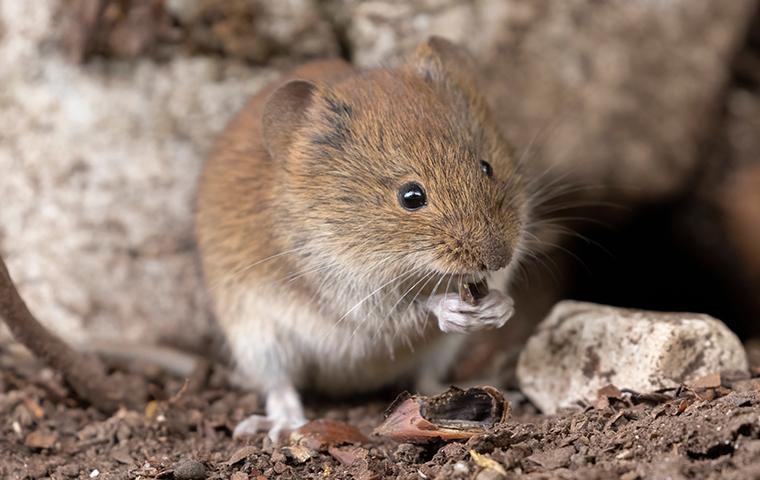Due to their similar appearance, voles are little rodents that may cause havoc in agricultural fields, gardens, and lawns. They are frequently confused with mice. These animals are widespread throughout North America, including the Kansas City region. They are also referred to as field mice or meadow mice. Even though voles are little animals, if allowed to proliferate unchecked, they may seriously harm landscape and vegetation. To lessen their influence, it is essential to recognize the hazards they represent and put in place efficient management mechanisms provided by Saela Pest.
Vole identification: voles have stocky bodies, short legs, and a blunt nose. They normally measure 5 to 8 inches in length, including their tail. Depending on the species and the habitat they live in, their dense fur might have a brown or gray color. Voles are primarily herbivores, feeding on a variety of plants, grasses, roots, and seeds. Their burrowing habits make them adept at tunneling through soil, which can disrupt root systems and create unsightly surface runways in lawns and gardens.
Understanding the Threat:
Vole infestations can pose several threats to both residential and agricultural areas in Kansas City:
- Damage to Vegetation: Voles feed on a wide range of plants, including vegetables, ornamental flowers, and grasses. Their gnawing habits can girdle the stems of young trees and shrubs, leading to stunted growth or even death.
- Tunneling and Burrowing: Voles create intricate networks of tunnels under the soil, which can undermine the structural integrity of lawns and gardens. These tunnels can also provide access for other pests, such as insects and larger rodents, further exacerbating the problem.
Controlling Vole Infestations:
Effective control of vole populations requires a multi-faceted approach that combines both preventive measures and targeted eradication strategies:
- Habitat Modification: Reduce vole habitat by keeping grass and vegetation trimmed short, removing debris and clutter from yards and gardens, and minimizing areas of dense vegetation where voles can hide and nest.
- Exclusion Techniques: Install barriers such as wire mesh or hardware cloth around the base of trees and garden beds to prevent voles from accessing vulnerable plants. Regularly inspect and repair any gaps or openings in fences and structures that could serve as entry points.
- Natural Predators: Encourage natural predators of voles, such as owls, hawks, snakes, and domestic cats, to frequent the area. Providing nest boxes or perches for birds of prey can help attract these beneficial predators.
- Trapping: It is possible to successfully catch voles using live traps baited with peanut butter or seeds. To avoid re-infestation, check traps frequently and release voles that have been caught far from your property.
Infestations of voles can cause serious problems for farmers, gardeners, and homes in the Kansas City region. Voles can be kept to a minimum in terms of damage to crops and landscapes by being aware of their habits and behavior, taking preventative action when needed, and using focused control methods when needed. Communities that work together can also benefit from increased awareness and easier access to practical control methods, which will ultimately lead to a more resilient and healthy environment for everyone.


